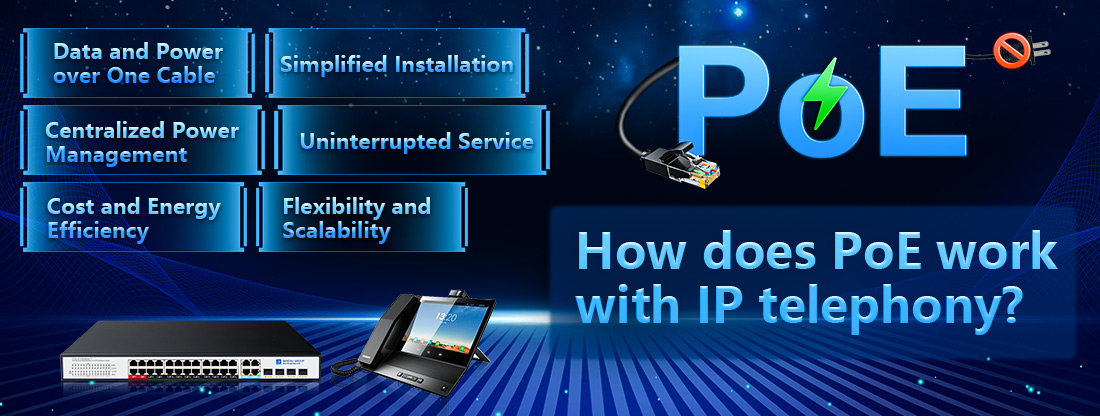
Power over Ethernet (PoE) works seamlessly with IP telephony by providing both data connectivity and power to IP phones through a single Ethernet cable. Here’s how it functions:
1. Data and Power over One Cable
IP phones require both a data connection to transmit voice over the network (VoIP) and electrical power to function. PoE enables this by delivering:
--- Power: Up to 15.4W (PoE) or 30W (PoE+) per port, depending on the PoE standard.
--- Data: Transmits voice data and other network information between the IP phone and the network.
2. Simplified Installation
--- Since IP phones can be powered through the Ethernet cable, there’s no need for a separate power supply. This makes installation easier, especially in large office environments where deploying multiple phones can be cumbersome.
3. Centralized Power Management
With PoE switches, power to IP phones can be centrally managed. Administrators can:
--- Monitor power usage.
--- Restart or power down phones remotely for troubleshooting or updates.
--- Prioritize power distribution if there's a power shortage.
4. Uninterrupted Service
--- When connected to a PoE-enabled switch with backup power (like an uninterruptible power supply, or UPS), IP phones can continue to operate even during a power outage. This is especially important for critical communications.
5. Cost and Energy Efficiency
--- PoE eliminates the need for separate AC power outlets near every phone, reducing electrical infrastructure costs. It also streamlines power consumption, as the switch can automatically provide the exact amount of power needed for each device.
6. Flexibility and Scalability
--- PoE makes it easy to scale IP telephony systems since phones can be moved or added without the need to install new electrical outlets. This enhances the flexibility of office layouts and future expansions.
How It Works in Practice:
--- The PoE switch (or a PoE injector) supplies power to the IP phone through the Ethernet cable.
--- The IP phone connects to the network, receiving both power and voice data (VoIP traffic).
--- This connection allows the phone to function without the need for a separate power supply, supporting voice calls, video calls, and other telephony features.
In summary, PoE significantly simplifies the deployment of IP telephony systems by reducing the need for additional power infrastructure, enhancing flexibility, and improving management and reliability.